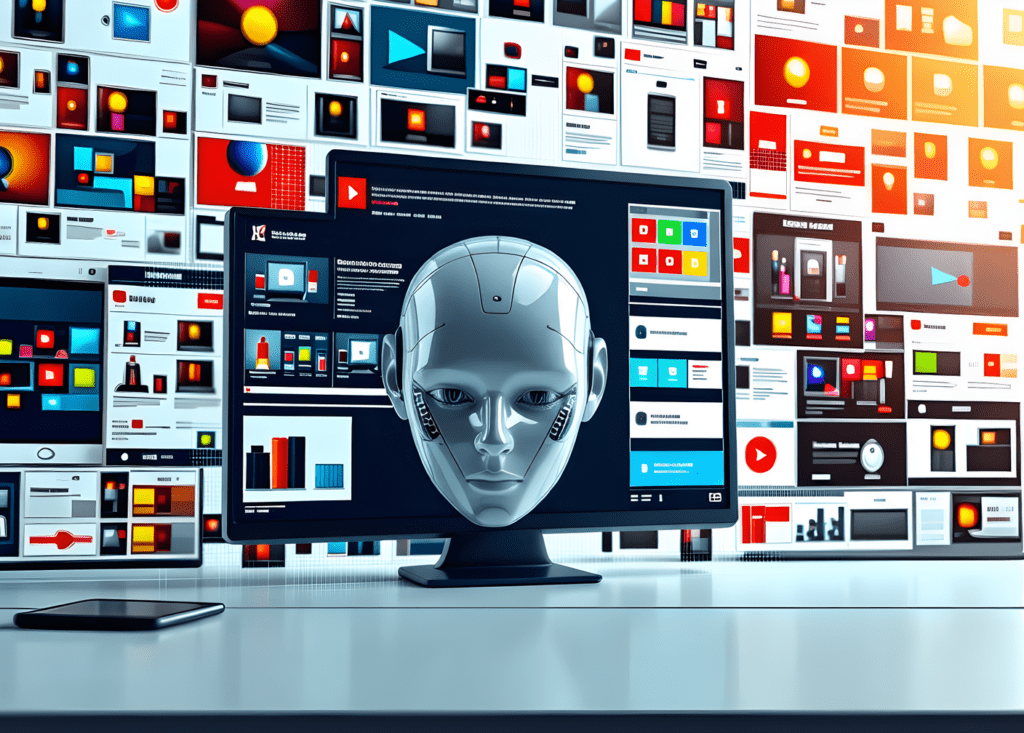In a world where the lines between reality and fiction are increasingly blurred, it’s no surprise that artificial intelligence (AI) and digital media are poised to fundamentally transform the way we shop.
Imagine this: you’re watching your favourite TV show. The main character strolls into a boutique, tries on a stunning jacket, and—without missing a beat—you reach for your smartphone or simply say, “Buy that jacket.” Moments later, the jacket is on its way to your door. Welcome to the future of shopping, where AI, digital media, and product placement coalesce in a way that could make traditional retail seem quaint.
The Seamless Convergence of AI, Digital Media, and Shopping
Let’s start by unpacking this brave new world where you can purchase any product directly from a TV show. In this future, AI doesn’t just enhance digital media; it merges with it, transforming content consumption into an immersive, interactive shopping experience.
Gone are the days when ads were seen as intrusive interruptions. Instead, AI-driven product placements could be woven into the narrative fabric of shows and movies, making them both unobtrusive and highly effective. The protagonist of your favourite drama sips on a tantalisingly fresh juice, and a quick glance reveals a pop-up link on your screen. With a simple voice command, that juice is now in your cart, and it’ll arrive just in time for your own afternoon refreshment.
Hyper-Personalised Content: More than Just Smart Suggestions
AI is not just a passive observer in this scenario; it’s an active participant. Leveraging deep learning algorithms and vast amounts of data, AI systems will predict your tastes and preferences with uncanny accuracy. Imagine watching a cooking show where the ingredients are tailored to your dietary preferences and allergies. Even better, all those ingredients are conveniently available for purchase with a single click, or even better, a nod of your VR headset.
But why stop there? In this new digital realm, shows themselves could become entirely dynamic and adaptive. Instead of a one-size-fits-all storyline, narratives could subtly change depending on the viewer’s profile. Are you a fan of vintage fashion? The protagonist’s wardrobe might reflect that, featuring products you’re likely to love. Or perhaps you’re in the market for a new car. The sleek, futuristic vehicle that just rolled up in that sci-fi thriller? It’s tailor-made to your tastes—and yes, it’s available to order directly through your VR interface.
Virtual Reality: The Next Frontier of Shopping
Speaking of VR, virtual reality headsets will likely become a crucial part of this new shopping experience. Imagine watching a show set in a high-end fashion store. With a VR headset, you could virtually walk through that very store, exploring the items on display, examining their textures and details, and, naturally, making purchases. This isn’t just idle speculation. Brands are already experimenting with virtual storefronts and interactive experiences, setting the stage for a future where shopping in VR is as common as browsing a website.
In fact, VR could allow consumers to try before they buy in an entirely new way. See a sofa in a show that you think would look perfect in your living room? Slip on your VR headset, and voila! You’re standing in your own lounge room with the sofa magically appearing before you. Give it a whirl, change the colour, adjust the size—all before committing to purchase. This level of interaction would not only enhance the shopping experience but could also drastically reduce returns and increase customer satisfaction.
Speech Activation: The Future of Frictionless Shopping
Voice activation will undoubtedly play a major role in the future of digital shopping. Just as we now casually ask Siri or Alexa to set reminders or play songs, we will soon be able to instruct our smart assistants to purchase products we see in digital media. “Buy the shoes from this scene,” you might say, and without lifting a finger, those shoes are on their way to you.
This frictionless, almost subconscious shopping experience will be made possible by advanced AI systems capable of recognising speech nuances and understanding context. It’s not just about voice recognition anymore; it’s about understanding intent, parsing out sarcasm or indecision, and acting accordingly. Imagine muttering, “Those earrings are gorgeous,” and having a prompt appear on your screen: “Would you like to buy them?”
The Ethical Dilemma: Consumerism on Steroids?
However, with this seamless integration of AI, digital media, and e-commerce comes an ethical dilemma. If every show we watch, every scene we indulge in, has the potential to turn into a shopping spree, are we heading towards a world of unbridled consumerism? Will the line between entertainment and advertising blur beyond recognition, or worse, will we be manipulated by subtle cues embedded within our favourite shows?
These questions are not without merit. There’s a thin line between personalisation and manipulation, and as AI becomes more adept at understanding our desires—sometimes even before we do—it could be argued that we’re being nudged down a path of consumption that we haven’t entirely chosen. It’s a topic ripe for debate, one that will likely evolve as the technology does.
The Technology Behind the Magic: AI, Big Data, and Machine Learning
Behind all this magic is a powerful convergence of AI, big data, and machine learning. AI algorithms analyse vast amounts of data to understand consumer behaviour, predict trends, and offer products that align perfectly with individual tastes. But it’s not just about tracking purchases; it’s about understanding patterns—what shows you watch, what scenes you linger on, what catches your eye, and what you skip.
Machine learning models could continuously learn and adapt to your preferences, making the system more intuitive and responsive over time. This is not just about more personalised ads; it’s about a fundamental shift in how products are marketed and sold, blurring the lines between content and commerce, and creating a shopping experience that’s as much about the journey as it is about the destination.
Looking Ahead: The Future of Shopping Is Already Here
The future where AI and digital media merge to create an immersive, personalised shopping experience isn’t some distant, sci-fi fantasy—it’s already beginning to take shape. From VR storefronts to adaptive content and voice-activated purchases, the pieces are already in place, slowly coming together to create a seamless, almost magical shopping experience.
As we stand on the precipice of this new era, the possibilities are as exciting as they are boundless. Will this new form of consumer engagement lead to a more satisfying, personalised shopping experience, or will it tip us further into a world where every moment, every glance, every thought is a potential transaction? Only time will tell.
For now, keep your eyes peeled during your next Netflix binge. That perfect jacket or those stunning shoes might just be a click—or a voice command—away.
FAQs
Q: How will AI change the way we shop in the future?
A: AI will make shopping more personalised, seamless, and integrated into our daily media consumption. From dynamic content that adjusts to your preferences to direct purchasing options from TV shows or VR experiences, AI will transform how we discover and buy products.
Q: Will I be able to buy anything I see on a TV show?
A: Potentially, yes. With AI and digital media integration, any product featured in a show could be linked to an online store, allowing viewers to purchase directly through various interfaces such as smartphones, voice assistants, or VR headsets.
Q: How will VR headsets play a role in the future of shopping?
A: VR headsets will provide a fully immersive shopping experience, allowing users to virtually explore stores, try on clothing, or see how furniture would look in their homes, all from the comfort of their own living room.
Q: Is there an ethical concern with AI-driven product placements?
A: Yes, there is a potential ethical concern around consumer manipulation and over-commercialisation. The ability of AI to understand and predict consumer behaviour raises questions about privacy, autonomy, and the balance between personalised experiences and intrusive advertising.
Q: How soon can we expect this future shopping experience to become a reality?
A: Elements of this future are already here, with companies experimenting with VR, dynamic content, and AI-driven personalisation. However, a fully integrated, seamless experience may still be a few years away, depending on technological advancements and market adoption.

